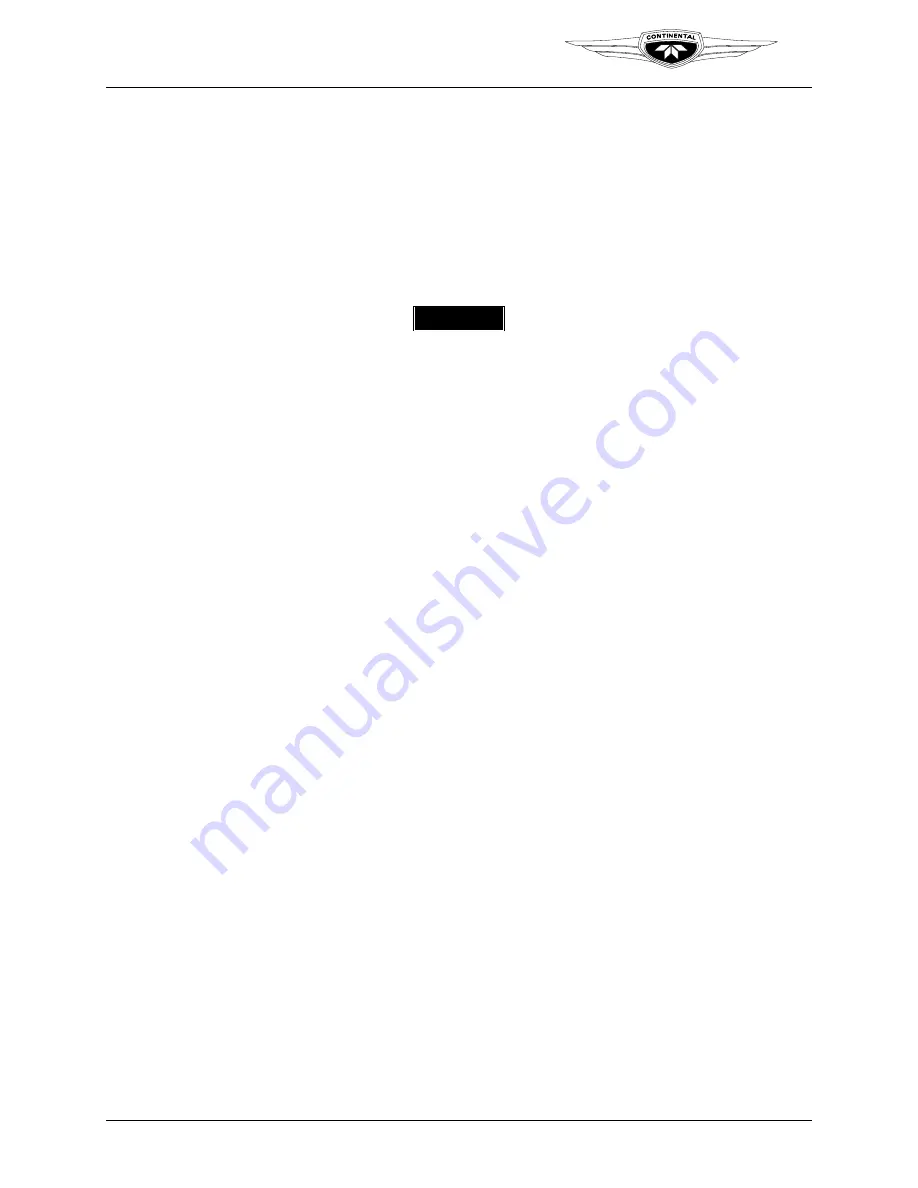
Non-Overhaul Removal and Replacement
Teledyne Continental Motors, Inc.
TM
10-28
IOF-240 Series Engine Maintenance Manual
29 November 2006
10-6.2. Piston Cleaning
Procedure
1.
Soak the cylinder and piston in mineral spirits.
2.
If soft or hard carbon deposits do not yield to solvent and deposits remain, install a
tight fitting skirt protector and dry blast the piston heads with soft grit or employ the
vapor grit method (to clean the piston top). Refer to the applicable sections “Dry
Blast Cleaning” and “Vapor Blasting” in Chapter 8, “Engine Cleaning” in the
Overhaul Manual (OH-22).
WARNING
When dry blasting, do not use sand, glass, shot or metal grit as
this can damage engine components. This type of media will
become embedded in aluminum parts rendering them
unusable.
3.
Clean the piston
and cylinder bores
with hot, soapy water and a stiff bristled (non-
wire) scrub brush to remove all blasting materials from the piston. Thoroughly rinse
all soap residue from the piston and cylinder bore using hot water.
CAUTION: Do not use wire brushes or scrapers of any kind to
clean the piston.
4.
Clean the piston ring grooves by pulling lengths of binder twine or very narrow strips
of crocus cloth through the groove. Do not use automotive ring grooves scrapers,
since the corner radii at the bottom of the grooves and side clearances must not be
altered. Do not use abrasive cloth on the piston skirts because the diameters and cam-
ground contour must not be altered.
5.
Discard scored or burned pistons.
6.
After cleaning, thoroughly rinse pistons using a Stoddard solvent to remove all debris.
















































